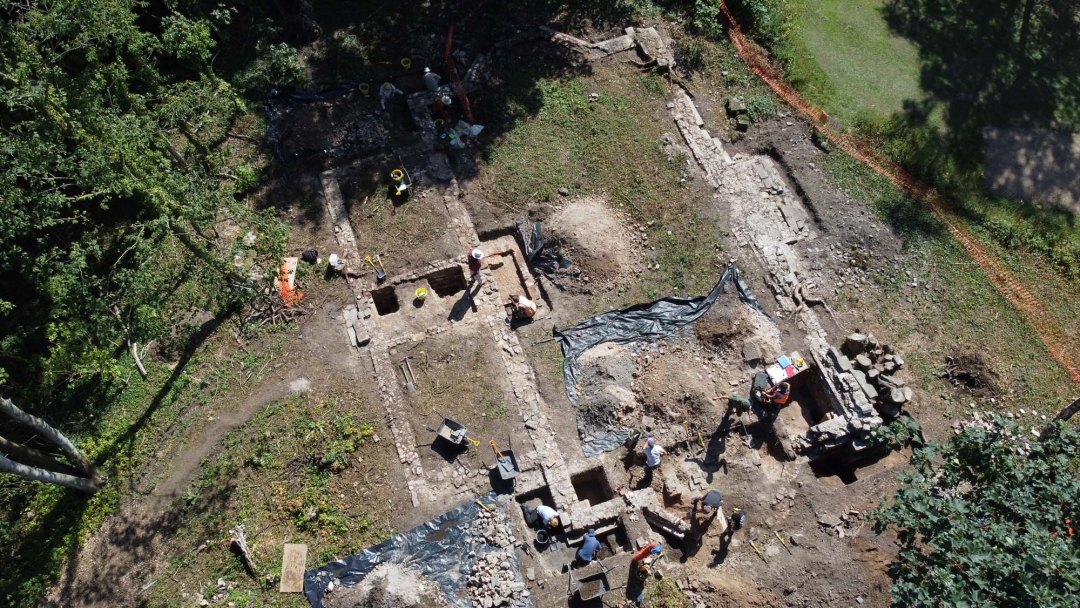Hardwick Park, in Sedgefield, County Durham, is a Grade II* Registered Historic Park and Garden, laid out from c. 1750.
It was principally the vision of Tyneside Businessman John Burdon who was advised by James Paine, a leading architect of the time. From 1749 until 1790, they created a new parkland of over 140 acres around a 17-acre lake. This lake was fed by a serpentine ‘river’ and circumnavigated by a circuit walk over a mile in length. Twelve carefully sited and geometrically linked buildings, alternating between classical and gothic styles, were spaced broadly around the walk. By the late 19th century, Burdon’s estate fell on hard times; the buildings fell into disrepair and the lake silted up.
The restoration of the park, completed in 2010 thanks to a £4.1m grant from the Heritage Lottery Fund, saw the renovation of the Temple of Minerva, the Gothic Ruin, the Gothic seat and the Bono Retiro. The Friends of Hardwick Park, working in partnership with Durham County Council, Archaeo-Environment Ltd and the Ramside Estate, developed a project in 2022 to investigate and ultimately restore/rebuild the Bath and Banqueting Houses within Hardwick Park. The funds for the first phase of works were raised from the National Lottery Heritage Fund and the Sir James Knott Trust to support a small community led project to partially excavate these historically significant 18th century structures under the archaeological supervision of staff from Pre-Construct Archaeology’s Durham office.
The community excavation was undertaken over two weeks in August 2020. Two induction days were held for volunteers to set out the scope and aims of the project that also included a brief introduction to archaeological excavation. The primary objective was to establish the survival and extent of the Bath and Banqueting Houses with seven trenches excavated across the two structures (Trench 1 was located within the Bath House and Trenches 2 to 7 within the Banqueting House). The project showed that survival of the two structures was excellent with the plunge pool surviving within the Bath House and several fireplaces identified within the Banqueting Hall. Architectural elements were also recovered from both structures that comprised cornicing, stonework and painted plaster.
Turnout was high throughout the project with volunteer participation numbering between 8-16 each day. Volunteers were taught the basics of trench set-out, excavation techniques, photography, archaeological recording (written and drawn records) and GPS surveying. The investigation was completed within timescale and budget and the feedback from the volunteers was unequivocally positive. We’d like to thank the volunteers and everyone involved with the project, including the drone pilot Phil Stewart.









